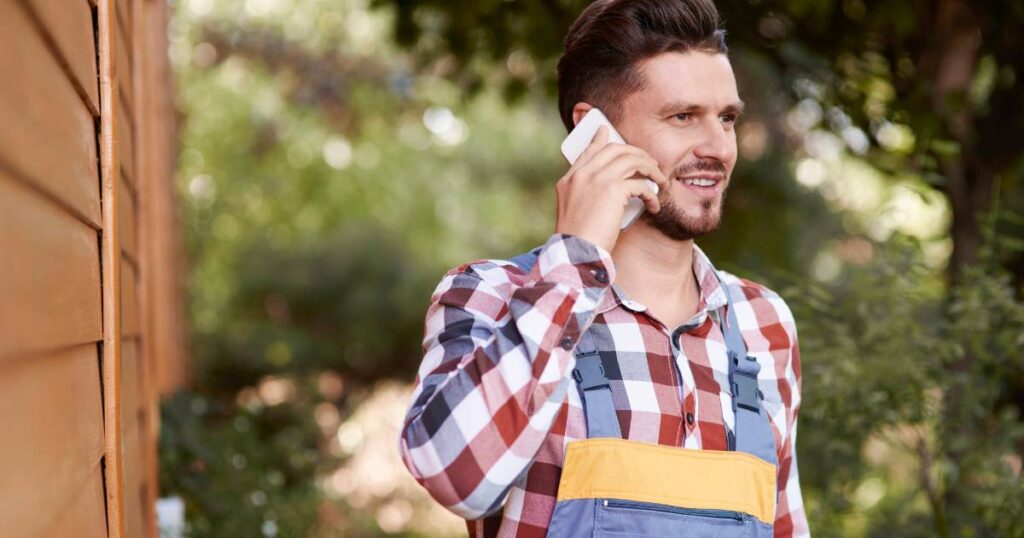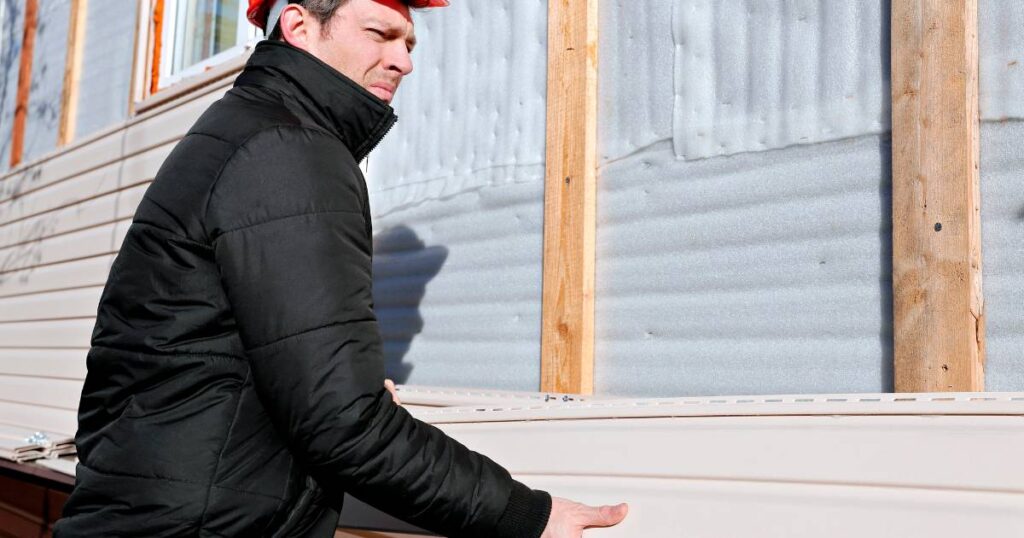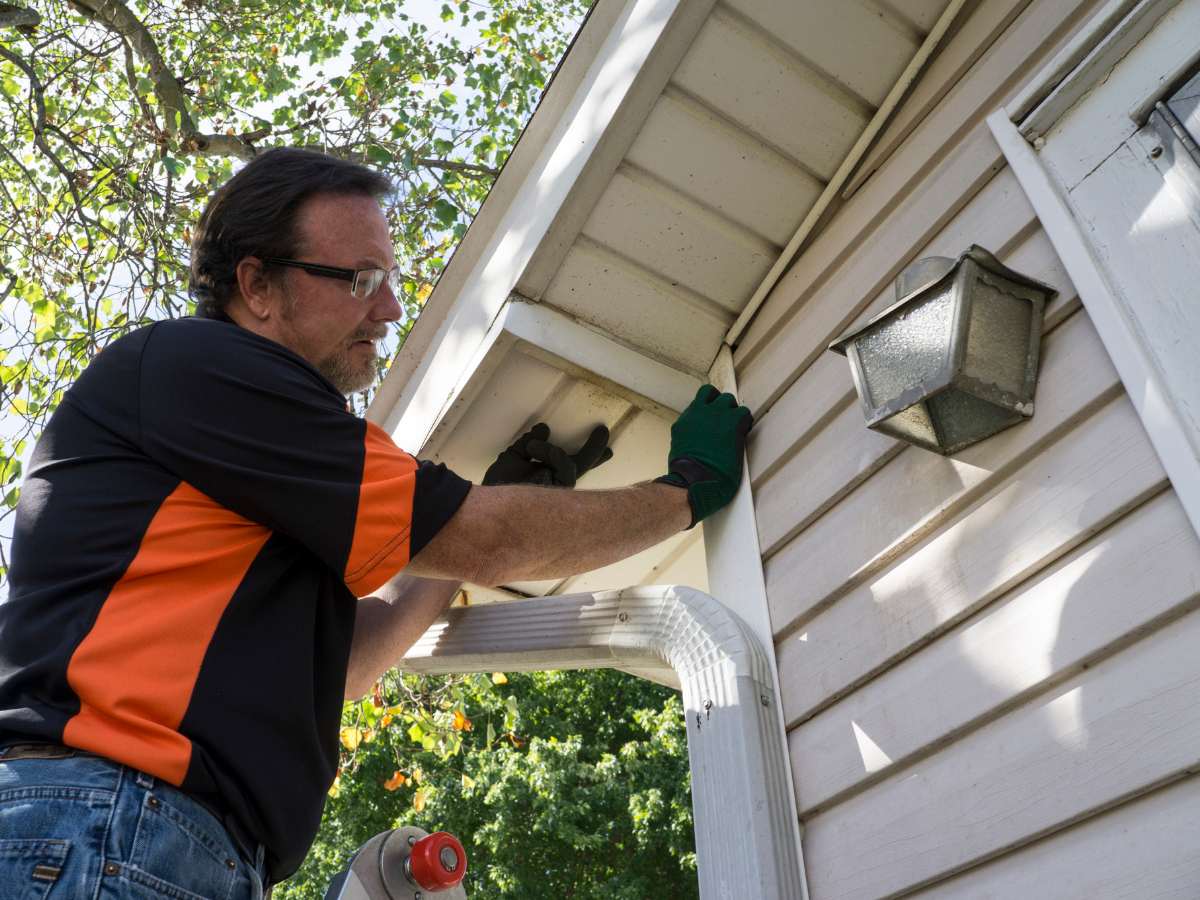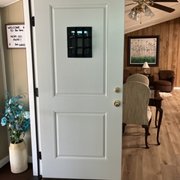Is it time for a siding replacement? Home siding plays a role in protecting and enhancing your home. Think of it as a superhero cape for your house, defending it against the forces of nature while adding a stylish touch. Its primary function is to shield your home from rain, wind, snow, and intense sunlight, ensuring the interior remains safe and secure.
But that’s not all! Siding also serves as a critical insulation barrier, helping to maintain a comfortable temperature indoors by keeping the elements at bay. It significantly contributes to the overall curb appeal of your property, giving it a fresh and attractive look that can increase its value.
Signs of Deteriorating Siding

Cracks, Splits, or Holes: These are obvious red flags that indicate your siding is compromised and vulnerable to moisture penetration.
Warping or Buckling: If your siding appears warped, bulging, or uneven, it suggests underlying issues such as water damage or structural problems.
Fading or Peeling Paint: Over time, exposure to the elements can cause your siding’s paint to fade or peel. This not only affects its appearance but also exposes it to potential damage.
Mold or Mildew Growth: Mold or mildew on your siding indicates excessive moisture retention, which can lead to further deterioration and potential health risks.
Increased Energy Bills: If you’ve noticed a sudden spike in your energy bills without a clear explanation, it could be due to compromised insulation caused by deteriorating siding.
Drafts or Cold Spots: Drafts or noticeable cold spots inside your home could indicate that your siding fails to provide adequate insulation, allowing air infiltration.
Moisture Stains or Water Infiltration: Dark stains or discoloration on your siding could indicate water infiltration, suggesting a potential leak or inadequate moisture protection.
Rotting or Soft Spots: If your siding feels soft or shows signs of rot, it is a clear indication of water damage, which compromises the structural integrity of your home.
Pest Infestation: Damaged siding can provide entry points for insects or rodents, leading to unwanted infestations.
Considerations for Siding Replacement
Age of the Current Siding: Most siding materials have a lifespan, and if your current siding is nearing the end of its expected life, it may be an excellent time to consider a replacement. Older siding is more prone to damage and may not provide optimal protection.
Maintenance Requirements: Some require more upkeep than others. For low-maintenance options, consider durable siding materials that need minimal cleaning, painting, or repairs.
Desired Curb Appeal: Think about the aesthetic appeal you want for your home. Explore various siding styles, colors, and textures to choose an option that complements your architectural style and matches your personal preferences.
Energy Efficiency Goals: Insulated siding or options paired with additional insulation can help improve your home’s energy efficiency, reducing heating and cooling costs in the long run.
Cost of Replacement: Assess your budget and consider the cost of the siding material, installation, and additional expenses. Compare prices and weigh them against the benefits and lifespan of the chosen siding material.
Return on Investment: Evaluate the potential return on investment for the siding replacement. High-quality siding enhances your home’s appearance and can increase its value.
Benefits of Replacing Home Siding
- Enhanced Curb Appeal – With various styles, colors, and textures available, choose siding that complements your home’s architecture. A visually appealing exterior can enhance the overall curb appeal and make a positive impression on visitors or potential buyers.
- Improved Energy Efficiency – Modern siding materials often come with enhanced insulation properties, helping to improve your home’s energy efficiency. New siding can help maintain a comfortable indoor temperature year-round by reducing air leakage and providing better insulation.
- Increased Home Value – Potential buyers are often attracted to properties with updated and well-maintained exteriors. The enhanced curb appeal, improved energy efficiency, and protection against the elements.
- Protection Against the Elements – Siding acts as a protective barrier, shielding your home from various weather conditions. New, durable siding can effectively resist moisture, wind, and UV radiation, preventing damage to the underlying structure.
- Reduced Maintenance and Repair Costs –Replace with high-quality siding materials, significantly reducing the need for ongoing maintenance and repair costs. New siding is designed to be durable, resistant to damage, and easier to clean and maintain.
Steps to Take When Replacing Siding

- Consultation with Professionals – They can assess the condition of your current siding. They provide expert advice and help you understand your options. A professional consultation will enable you to make informed decisions based on your needs and budget.
- Material Selection – Common siding materials include vinyl, fiber cement, wood, and metal. Research and explore different options to suit your preferences and requirements best.
- Hiring a Reputable Contractor – Ask for recommendations, review portfolios, and check customer reviews to ensure their expertise and reliability.
- Obtaining Necessary Permits – You may need permits to ensure compliance with local regulations. Your contractor can assist you with the permit application process if needed.
- Preparing the Home for Installation – Clear any obstacles or furniture near the work area. Protect fragile items, and ensure the surrounding landscape is ready for construction.
- Siding Installation Process – It involves removing old siding, inspecting structure for repairs, and installing the new siding.
- Quality Inspection and Warranty – Check for flaws, ensure proper sealing, and verify that the siding is installed correctly. A reputable contractor will address any issues promptly.
Replacing Your Home Siding

Timely siding replacement is essential to maintain the structural integrity of your home and protect it from the elements. Deteriorating siding can lead to extensive damage, higher energy costs, and decreased curb appeal. You can avoid costly repairs and potential safety hazards by replacing them promptly.
You can embark on a successful siding replacement journey, transforming your home’s exterior, improving energy efficiency, and ensuring long-term protection. Remember, timely replacement and thoughtful decision-making will yield lasting benefits for your home and peace of mind.



























